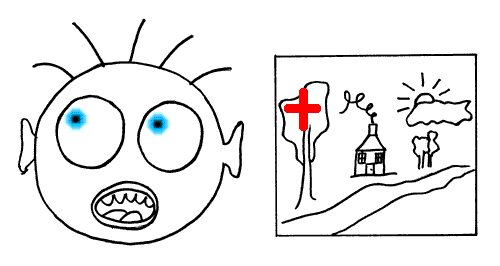

ANALYSIS OF "EYE MOVEMENTS" CAN BE OVERDONE IN PHOTOJUDGING!
It may be that one's background has included exposure to an all-encompassing theory of how "good" visual art should look and/or how one should "look" at visual art. Or one may come to believe that a given rule of composition, say the rule of thirds, is far more important aesthetically than anything else in an image. Any judge who zealously applies such a simplistic perspective will be immediately recognizable. Suddenly, everything seems to revolve around 1 or 2 arbitrary specifics - leading lines, some obscure rule of composition, color combinations, etc., and everything else is a minor consideration. Needless to say, such an approach does not come off as good judging to the "uninitiated" audience. |
![]()
| One major example I've encountered in this category are judges who are preoccupied with analyzing eye movements. With every photo, they appear to go into a trance and let the image take control of their eyes. Every entry is evaluated in terms of "..where my eyes started..." and "...where they ended up." Hence, I call them "lazy eye" judges. |
| Now, I agree that certain photographic elements such as a person's
face will attract
the eye and therefore can be used to improve the composition of the scene.
But consider what happens when you see a really beautiful
photo. You will probably be on the edge of your seat, eagerly and willfully
moving your eyes over every part of that
image before awarding it a "10". In other words,
analysis of eye movements has its place in photojudging, but it's
best not to overdo it. And in general, it is best to realize that photographic quality can be influenced by many different aesthetic elements, all of which deserve consideration in photojudging. |